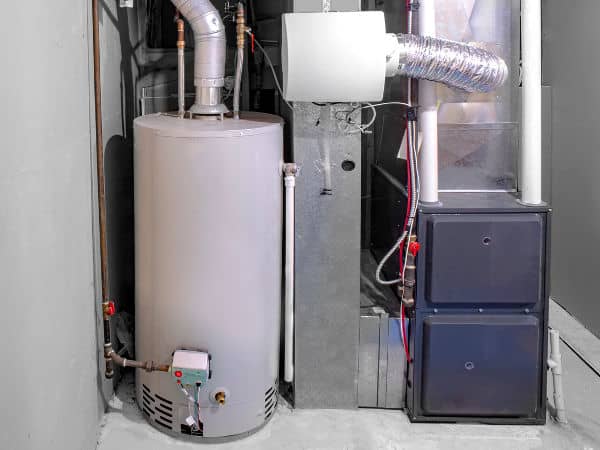Were you searching for suggestions concerning What Kind of Maintenance Do Water Heaters Need??

Warm water is essential for day-to-day convenience, whether it's for a rejuvenating shower or cleaning dishes. To ensure your warm water system runs efficiently and lasts much longer, regular upkeep is vital. This post gives useful pointers and insights on just how to maintain your home's hot water system to stay clear of disruptions and costly repair services.
Intro
Preserving your home's warm water system might appear overwhelming, but with a couple of straightforward actions, you can ensure it operates efficiently for many years to find. This guide covers every little thing from comprehending your hot water system to do it yourself maintenance pointers and knowing when to call in specialist assistance.
Significance of Keeping Your Warm Water System
Normal maintenance not just prolongs the lifespan of your warm water system however also guarantees it runs successfully. Ignoring maintenance can result in lowered effectiveness, higher power costs, and even early failing of the system.
Signs Your Warm Water System Demands Maintenance
Understanding when your warm water system needs interest can avoid major concerns. Keep an eye out for indications such as irregular water temperature level, unusual noises from the heating system, or rustic water.
Flushing the Water Heater
Purging your water heater eliminates debris build-up, enhancing effectiveness and extending its life.
Monitoring and Changing Anode Rods
Anode poles protect against rust inside the storage tank. Evaluating and changing them when broken is crucial.
Complex Concerns Calling For Specialist Aid
Examples include significant leakages, electrical problems, or if your hot water heater is consistently underperforming.
Regular Specialist Maintenance Benefits
Professional upkeep can include comprehensive inspections, tune-ups, and guaranteeing compliance with safety and security requirements.
Inspecting and Changing Temperature Setups
Changing the temperature setups guarantees optimal efficiency and safety.
Do It Yourself Tips for Maintenance
You can execute a number of maintenance jobs yourself to maintain your hot water system in leading problem.
Looking for Leaks
Consistently examine pipelines and connections for leakages, as these can result in water damages and greater bills.
Comprehending Your Hot Water System
Before diving right into upkeep tasks, it's valuable to recognize the basic parts of your hot water system. Usually, this consists of the hot water heater itself, pipes, anode rods, and temperature level controls.
Month-to-month Upkeep Tasks
Regular regular monthly checks can assist capture small concerns before they escalate.
Examining Pressure Alleviation Valves
Testing the pressure relief valve guarantees it operates appropriately and prevents extreme pressure accumulation.
Shielding Pipelines
Shielding hot water pipes decreases warm loss and can save energy.
When to Call an Expert
While do it yourself upkeep is helpful, some concerns call for professional proficiency.
Final thought
Routine upkeep of your home's hot water system is important for efficiency, durability, and price financial savings. By adhering to these tips and knowing when to seek professional aid, you can guarantee a trusted supply of warm water without unexpected interruptions.
How to Maintain an Instant Hot Water Heater
Before tinkering with your hot water heater, make sure that it’s not powered on. You also have to turn off the main circuit breaker and shut off the main gas line to prevent accidents. Also turn off the water valves connected to your unit to prevent water from flowing into and out of the appliance. 2. When you’re done, you have to detach the purge valves’ caps. These look like the letter “T” and are situated on either side of the water valves. Doing so will release any pressure that has accumulated inside the valves while at the same time avoid hot water from shooting out and burning your skin. 3. When the purge valves’ caps are removed, you have to connect your hosing lines to the valves. Your unit should have come with three hoses but if it didn’t, you can purchase these things from any hardware or home repair shops. You can also get them from retail stores that sell water heating systems. Read the user’s manual and follow it to complete this task properly. When the hosing lines are connected, open the purge port’s valves. 4. You should never use harsh chemical cleaners or solutions when cleaning your unit. Make use of white vinegar instead. It should be undiluted and you’ll probably use about 2 gallons. 5. Now flush your water heater. This task should probably take about 40 minutes. We can’t give you specific directions for this because the procedure is carried out depending on the type, model and brand of your heater. With that being said, refer to the user’s manual. 6. When you’re done draining the unit, you have to turn off the purge port valves again. Remove the hosing lines that you earlier installed on each of the water valves. Put the valve caps (purge port) back in their respective places and be very careful so as not to damage the rubber discs that are found inside these caps. 7. Now that everything’s back in place, check your user’s manual again to find out how to reactivate your water heating system. 8. Once it is working, turn one of your hot water faucets on just to let air pass through the heater’s water supply pipes. Leave the tap on until water flows smoothly out of it. https://www.orrplumbing.com/blog/2014/september/how-to-maintain-an-instant-hot-water-heater/

I came across that piece of writing on What Kind of Maintenance Do Water Heaters Need? when browsing on the web. Sharing is caring. One never knows, you will be helping someone out. Thanks for going through it.
Call Today